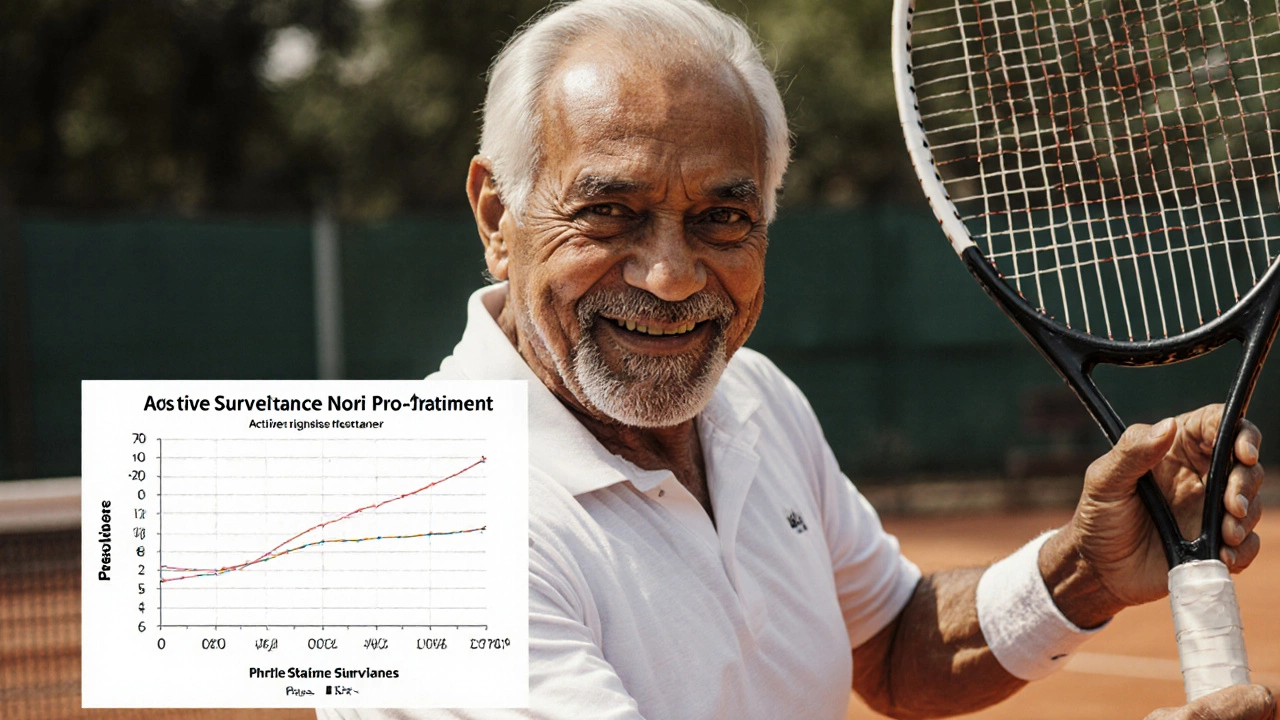Cancer Survival Rate Calculator
Calculate Your Survival Outlook
Your Survival Outlook
Based on current medical guidelines and data from the American Cancer Society
What This Means
Key Takeaways
- Early Detection Survival rates improve significantly when cancer is caught early
- Treatment Options Modern treatments include surgery, radiation, and targeted therapies
- Prognosis Higher survival rates don't mean no side effects - focus on quality of life
When someone hears the word cancer, fear often follows. But not all cancers are the same. Some move quickly, spread widely, and are hard to treat. Others grow slowly, respond well to treatment, and many people live for decades after diagnosis. The truth is, cancer survival isn’t one story-it’s dozens of different stories, depending on the type.
Why Survival Rates Matter More Than You Think
Survival rates don’t tell you if you’ll live or die. They show patterns-what’s happened to thousands of people with the same diagnosis, in the same stage, at the same age. These numbers come from large studies, like those by the American Cancer Society and the National Cancer Institute. They’re based on data collected over five years or more. When you see a 95% five-year survival rate, it means 95 out of 100 people diagnosed with that cancer were still alive five years later. That doesn’t mean they’re cured. But it does mean they lived long enough to manage it like a chronic condition.Thyroid Cancer: The Most Survivable
Thyroid cancer tops the list for a reason. It’s often found early because of a lump in the neck, a cough that won’t go away, or a voice change. In most cases, it’s papillary thyroid cancer-the slowest-growing type. Surgery removes the thyroid. Then, patients take a daily pill to replace thyroid hormones. Radioactive iodine treatment wipes out any leftover cancer cells. The five-year survival rate? Over 98% for localized cases. Even when it spreads to nearby lymph nodes, survival stays above 97%.Why does it respond so well? Thyroid cells absorb iodine. That’s how radioactive iodine works-it targets only thyroid tissue, leaving the rest of the body untouched. Most patients return to normal life within weeks. A 32-year-old teacher in Bangalore was diagnosed with stage 2 thyroid cancer in 2022. She had surgery in March, took radioactive iodine in April, and was back in her classroom by June. She’s now in remission and checks in once a year.
Prostate Cancer: Slow, But Manageable
Prostate cancer is the second most common cancer in men worldwide. But here’s the twist: many men live with it for years without ever knowing. It often grows so slowly that doctors recommend active surveillance instead of immediate treatment. That means regular PSA blood tests, digital exams, and occasional biopsies to watch for changes.For men diagnosed with localized prostate cancer, the five-year survival rate is nearly 100%. Even when it spreads to nearby tissues, survival stays above 98%. Treatment options include surgery, radiation, hormone therapy, or a mix. Side effects like urinary incontinence or erectile dysfunction happen, but many men recover function over time with rehab and medication.
A 68-year-old retired engineer from Pune was diagnosed in 2021 after a routine PSA test. His doctor said, “Let’s watch it.” Two years later, his PSA levels stayed flat. No treatment needed. He plays tennis twice a week. His story isn’t rare. In India, over 70% of prostate cancers are caught early because men are getting screened more often.

Breast Cancer: Early Detection Saves Lives
Breast cancer is the most common cancer in women globally. But survival has improved dramatically over the last 20 years. Why? Better screening and smarter treatments. Mammograms catch tumors before they can be felt. New drugs target specific cancer cell markers-like HER2-positive or hormone-receptor-positive cancers.For early-stage breast cancer (Stage I or II), the five-year survival rate is 99%. Even Stage III, where cancer has reached nearby lymph nodes, has a survival rate of 86%. Treatments now include targeted therapies, immunotherapy, and personalized medicine. A 45-year-old woman from Chennai found a small lump during a self-exam. Biopsy showed invasive ductal carcinoma, but it was Stage I. She had a lumpectomy, followed by radiation and five years of hormone therapy. She’s cancer-free and back to running marathons.
What changed the game? Routine screening. In cities like Bangalore, Delhi, and Mumbai, mobile mammography units now visit workplaces and housing societies. Women are getting checked younger. And when caught early, breast cancer is often curable.
What Makes These Cancers More Survivable?
These three cancers share key traits:- They’re often detected early-through screening, symptoms, or routine checkups.
- They respond well to existing treatments-surgery, radiation, targeted drugs.
- They grow slowly, giving time to intervene.
- Doctors understand their biology better than most cancers.
Compare that to pancreatic or lung cancer, where symptoms appear late, tumors spread fast, and treatment options are limited. Survival rates for those cancers are often below 20% at five years.

Survival Isn’t the Whole Story
A high survival rate doesn’t mean no side effects. Thyroid cancer patients need lifelong hormone replacement. Prostate cancer survivors might deal with sexual dysfunction. Breast cancer patients can face fatigue, joint pain, or lymphedema. Recovery isn’t just about living-it’s about living well.That’s why support matters. Physical rehab, mental health counseling, nutrition advice, and peer groups help people rebuild their lives after treatment. In India, organizations like the Indian Cancer Society and local NGOs offer free counseling and follow-up care for survivors.
What You Can Do Now
You don’t need to wait for symptoms. Prevention and early detection are your best tools.- Women over 40: Get a mammogram every 1-2 years. If you have a family history, start earlier.
- Men over 50: Talk to your doctor about PSA testing. Don’t skip it because it’s uncomfortable.
- Anyone with a neck lump, voice change, or trouble swallowing: See an ENT specialist. Don’t wait.
- Know your body. A new lump, unexplained weight loss, or persistent fatigue isn’t normal.
Cancer isn’t a death sentence anymore-not for these three types. The science has caught up. The tools are here. What’s missing is awareness. And action.
Are these three cancers really curable?
Many people with early-stage thyroid, prostate, and breast cancer are cured-meaning no signs of cancer after treatment and no recurrence for years. But doctors often say “in remission” instead of “cured” because there’s always a small chance of return. Long-term follow-up is still needed.
Can younger people get these cancers too?
Yes. Breast cancer can strike women in their 20s and 30s, especially if there’s a genetic mutation like BRCA1 or BRCA2. Thyroid cancer is common in people under 40. Prostate cancer is rare under 45, but aggressive forms can occur. Age isn’t a shield-screening and self-checks matter at every age.
Do survival rates apply to people in India?
Yes, but with caveats. Survival rates from the U.S. or Europe are based on populations with universal access to screening and treatment. In India, outcomes vary by region and income. But in major cities with good hospitals, survival rates for early-stage cancers match global numbers. The gap closes when people get screened early and stick to treatment.
What if my cancer isn’t one of these three?
Survival rates vary widely. Melanoma skin cancer has a 94% five-year survival rate when caught early. Testicular cancer is over 95%. Even some lung and colorectal cancers have much better outcomes today than 10 years ago. The key is early detection and expert care. Don’t assume your type is hopeless-talk to an oncologist about your specific case.
Is chemotherapy always needed for these cancers?
No. Many thyroid cancer patients only need surgery and hormone pills. Many prostate cancer patients choose active surveillance. Many early breast cancer patients skip chemo entirely if their tumor is hormone-sensitive and low-risk. Treatment is personalized now-not one-size-fits-all.
